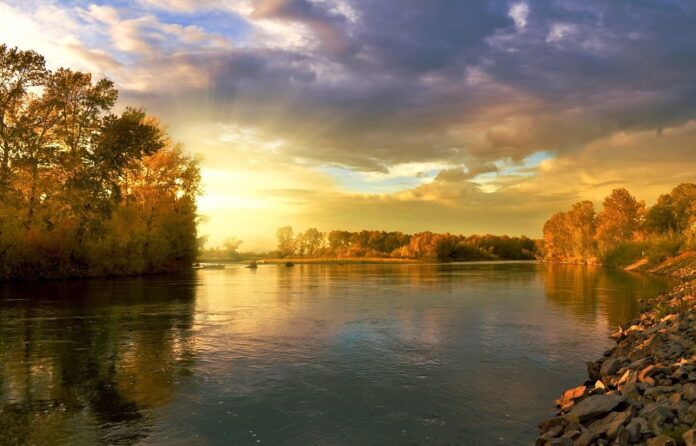Freshwater is the lifeblood of our planet, a critical resource for ecosystems, agriculture, industry, and human consumption. Yet, despite its importance, many people are unaware of the basics of the world’s freshwater reserves. Freshwater is found in various forms, including surface water in rivers and lakes, groundwater in aquifers, and in frozen forms such as glaciers and ice caps. Only a tiny fraction of the Earth’s water, about 2.5%, is freshwater, and even less, approximately 0.007%, is readily accessible for direct human use.
The hydrological cycle, a continuous process involving evaporation, condensation, precipitation, and runoff, replenishes and redistributes freshwater around the globe. This cycle is crucial for maintaining the balance of freshwater resources. However, the distribution of these resources is not uniform, with some regions enjoying abundant supplies while others face severe scarcity. Understanding the basics of freshwater reserves is the first step in appreciating the challenges and responsibilities associated with managing this vital resource.
The Distribution of Freshwater: Where Does All the Sweet Water Reside?
Freshwater is unevenly distributed across the Earth’s surface, leading to significant disparities in availability. The majority of freshwater, about 68.7%, is locked up in ice caps and glaciers, primarily in Greenland and Antarctica. Another significant portion, roughly 30.1%, is stored underground in aquifers, soil moisture, and permafrost. Only a small fraction, about 1.2%, is surface water found in lakes, rivers, wetlands, and reservoirs.
Geographical factors play a pivotal role in the distribution of freshwater. For instance, the Amazon Basin holds about 20% of the world’s river water, while the Congo, Ganges, Brahmaputra, and Mississippi rivers are also major freshwater sources. However, many regions, such as the Middle East and North Africa, have limited freshwater resources and rely heavily on groundwater or desalination. The uneven distribution of freshwater necessitates international cooperation and innovative management strategies to ensure equitable access and sustainable use.
Assessing the Abundance: Quantifying Our Planet’s Freshwater Resources
Quantifying the Earth’s freshwater resources is a complex task, but it is essential for effective management and conservation. According to the United Nations, the total volume of water on Earth is about 1.386 billion cubic kilometers, with freshwater constituting approximately 35 million cubic kilometers. However, the volume of freshwater that is easily accessible and suitable for human use is much less, as much of it is too polluted, too remote, or too deep underground to be extracted economically.
Groundwater accounts for a significant portion of the accessible freshwater, with an estimated 15,000 cubic kilometers being withdrawn annually for agricultural, industrial, and domestic purposes. The rate of groundwater depletion in some areas is a growing concern, as it can lead to land subsidence, reduced water quality, and ecosystem damage. Accurate assessment of freshwater resources is crucial for planning and implementing sustainable water management practices.
Threats to Freshwater Availability: Recognizing the Challenges Ahead
Freshwater availability faces numerous threats that could jeopardize its sustainability. Climate change is altering precipitation patterns, leading to droughts in some areas and floods in others, both of which can affect water availability and quality. Pollution from agricultural runoff, industrial discharges, and untreated sewage is contaminating water sources, making them unsafe or unsuitable for use. Over-extraction of groundwater and surface water for irrigation and urban development is leading to depletion and ecological degradation.
Population growth and economic development are increasing the demand for freshwater, intensifying competition among users and exacerbating scarcity issues. Transboundary water conflicts can arise when multiple countries share water resources, such as rivers or aquifers, and have competing needs. Recognizing these challenges is the first step toward developing strategies to address them and ensure the long-term availability of freshwater.
Conservation and Management: Strategies for Sustaining Sweet Water Supplies
Conserving and managing freshwater resources requires a multifaceted approach that involves governments, communities, and individuals. Integrated Water Resources Management (IWRM) is a process that promotes the coordinated development and management of water, land, and related resources to maximize economic and social welfare without compromising the sustainability of vital ecosystems. Water conservation measures, such as improving irrigation efficiency, promoting water-saving technologies, and reducing consumption, are essential to reduce waste and extend the availability of freshwater.
Protecting watersheds and maintaining the health of aquatic ecosystems are critical for preserving water quality and quantity. Public education and awareness campaigns can encourage responsible water use and support for conservation initiatives. International agreements and collaborative efforts can help manage transboundary water resources effectively and peacefully. By implementing these strategies, we can work towards sustaining our sweet water supplies for future generations.
The Future of Freshwater: Innovations and Policies for Preserving Our Precious Resource
The future of freshwater depends on our ability to innovate and implement effective policies. Technological advancements, such as desalination, water recycling, and advanced treatment methods, can expand the sources of usable water. Smart water management systems that use sensors and data analytics can optimize water distribution and reduce losses. Developing drought-resistant crops and adopting sustainable agricultural practices can significantly reduce water consumption.
Policies that incentivize water conservation, protect natural water bodies, and regulate pollution are essential for maintaining freshwater resources. Climate change mitigation efforts can help stabilize hydrological patterns and reduce the risk of water-related disasters. International cooperation on water issues is also crucial, as it fosters shared responsibility and collective action. By embracing innovation and enacting forward-thinking policies, we can secure the future of our planet’s most precious resource: freshwater.
